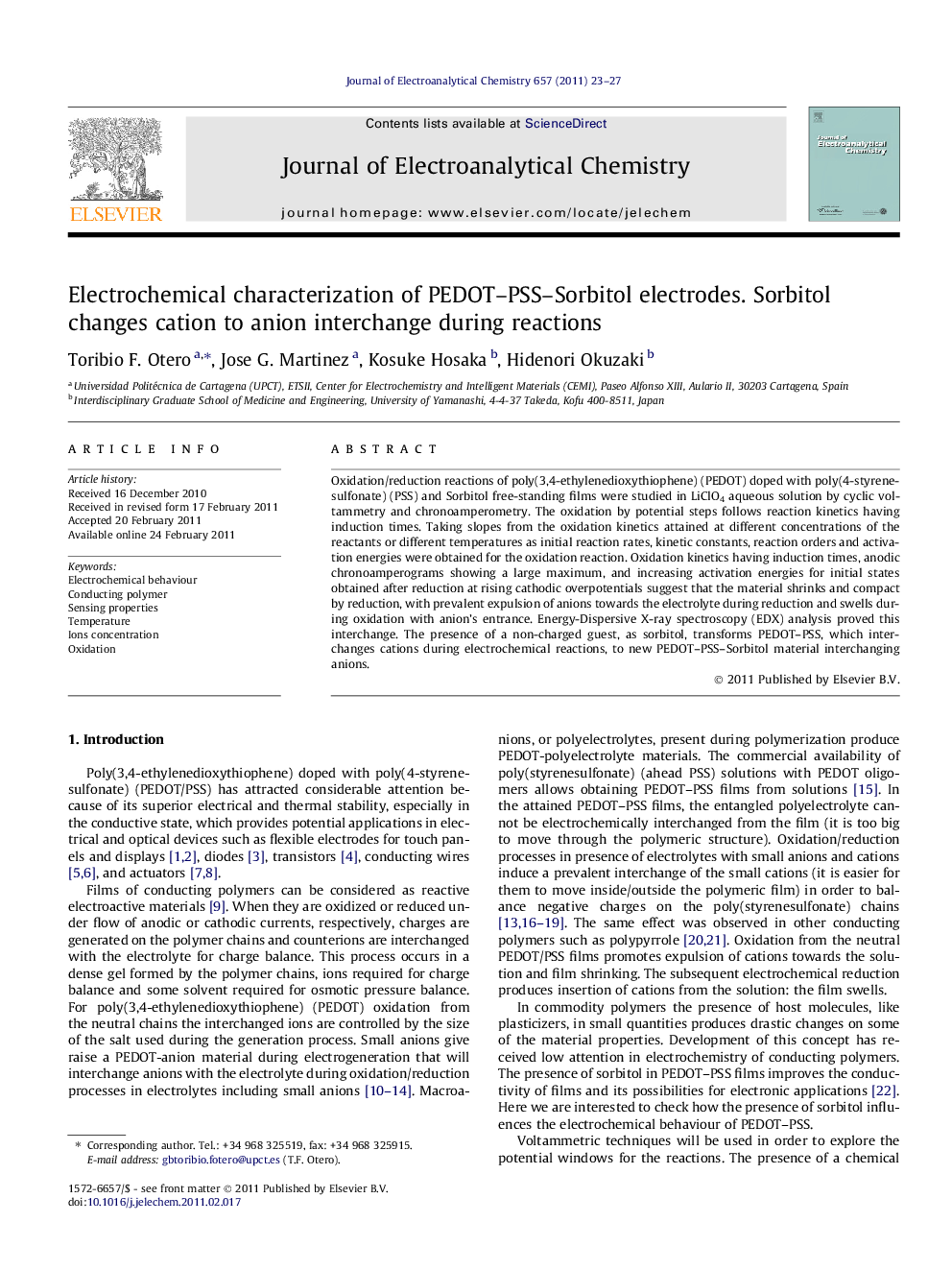| Article ID | Journal | Published Year | Pages | File Type |
|---|---|---|---|---|
| 219517 | Journal of Electroanalytical Chemistry | 2011 | 5 Pages |
Oxidation/reduction reactions of poly(3,4-ethylenedioxythiophene) (PEDOT) doped with poly(4-styrenesulfonate) (PSS) and Sorbitol free-standing films were studied in LiClO4 aqueous solution by cyclic voltammetry and chronoamperometry. The oxidation by potential steps follows reaction kinetics having induction times. Taking slopes from the oxidation kinetics attained at different concentrations of the reactants or different temperatures as initial reaction rates, kinetic constants, reaction orders and activation energies were obtained for the oxidation reaction. Oxidation kinetics having induction times, anodic chronoamperograms showing a large maximum, and increasing activation energies for initial states obtained after reduction at rising cathodic overpotentials suggest that the material shrinks and compact by reduction, with prevalent expulsion of anions towards the electrolyte during reduction and swells during oxidation with anion’s entrance. Energy-Dispersive X-ray spectroscopy (EDX) analysis proved this interchange. The presence of a non-charged guest, as sorbitol, transforms PEDOT–PSS, which interchanges cations during electrochemical reactions, to new PEDOT–PSS–Sorbitol material interchanging anions.
Graphical abstract.Figure optionsDownload full-size imageDownload as PowerPoint slideHighlights► Oxidation chronoamperograms of PEDOT-PSS-Sorbitol films show a maximum. ► At the maximum the oxidation occurs under chemical kinetic control. ► Rising activation energies were obtained from deeper reduced initial states. ► Only the oxidized film includes anions, checked by EDX. ► Sorbitol added to PEDOT-PSS, moves cation exchange into anion exchange.
